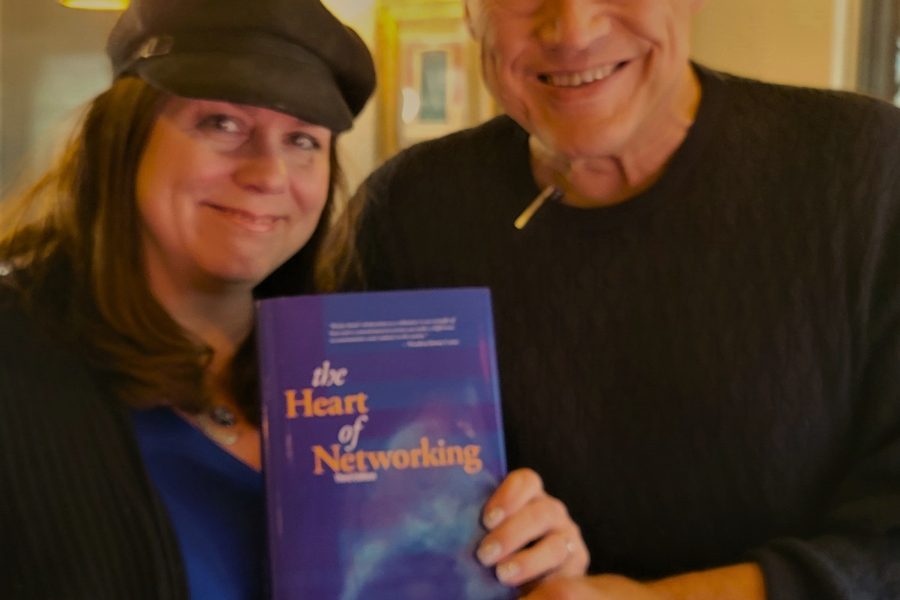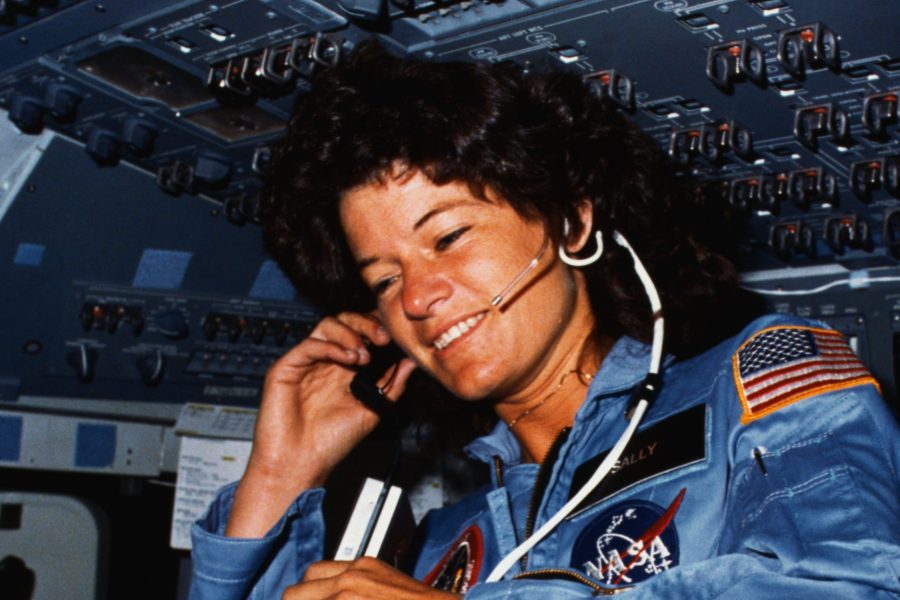EMS Tech Founder Cultivated a Generation of Engineers & Leaders who Continue to Influence, Innovate in Satcom
ATLANTA – July 13, 2020 – Thirteen years ago today, Georgia and the engineering world lost a visionary: John E. Pippin, founder of EMS Technologies, Inc. Dr. Pippin founded EMS Technologies (then Electromagnetic Sciences Inc.) as a spinoff of Scientific Atlanta in 1968, and retired as the company chairman in 1998.
For over four decades, EMS was the place the brightest engineering minds came to solve challenging RF issues for clients like the Department of De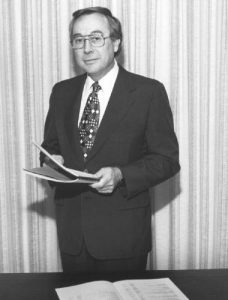 fense, U.S. Air Force and most of the world’s top aerospace primes. From 1968 through 2011, when it was bought by Honeywell, EMS built a reputation as an engineering powerhouse.
fense, U.S. Air Force and most of the world’s top aerospace primes. From 1968 through 2011, when it was bought by Honeywell, EMS built a reputation as an engineering powerhouse.
Today, virtually all military satellites from Defense Satellite Communications System (DSCS) to MILSTAR and Advanced EHF to the Wideband Global SATCOM system have elements of EMS hardware flying on board.
“One of the biggest contributions EMS made was the beam forming network for DSCS – the first military beam-forming network in space,” says Theresa Brunasso, founder and president of Atlanta-based D&S Microwave, who spent nearly 21 years at EMS. Her roles included serving as a principal engineer and director of Technology Development. “The company was founded by and run by engineers and they really appreciated engineering talent.”
Birth of Ka-band Satellites
“It was a great place to work; there were a lot of smart people to learn from – good mentors and really creative people,” recalls Wyman Williams, who spent more than 15 years at EMS, joining the company as a test engineer and leaving as the VP and chief engineer.
EMS’s work on a beam forming network in the 1980s became a key part of NASA’s Advanced Communications Technology Satellite (ACTS). ACTS marked the beginning of Ka-band satellites, with the world drawn to the wider bandwidth available in the 20/30 GHz spectrum, which promised greater throughput capabilities.
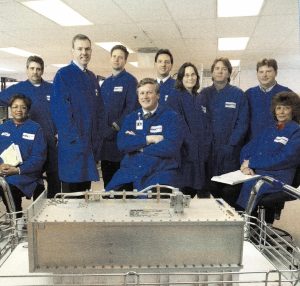 “EMS built the first Ka-band satellite antenna beam former and pretty much everything that has come after has been derived from that,” says Williams, who today serves as chief of the Space Systems Program Office at Georgia Tech Research Institute.
“EMS built the first Ka-band satellite antenna beam former and pretty much everything that has come after has been derived from that,” says Williams, who today serves as chief of the Space Systems Program Office at Georgia Tech Research Institute.
Williams became famous at EMS for maintaining a spreadsheet that tracked every piece of ferrite hardware that was launched on orbit and how long it worked. “The reliability we were achieving was off the charts,” he recalls. “In all the time that EMS existed, our ferrite components never failed on orbit.”
Brunasso agreed, recalling how when she was pitching the Mars Curiosity rover antenna, which EMS eventually won, one of the evaluators asked her why EMS was so expensive and Brunasso said it was because of the engineering design work that went into their solutions. “They went with us anyway because of our reputation. We made our hardware work.”
Ground Terminal Contributions
But EMS engineering chops weren’t limited to just networking hardware.
“My years at EMS were built on years of working with satellite and terminal technologies,” says Bill Hafner, who spent 15 years at EMS and Honeywell.
At the time EMS was building the ACTS beam formers, it also designed two terminals, initially used on a rail train and a small aircraft, a terminal design that EMS and later Honeywell developed for Inmarsat, says Hafner, who today is Inmarsat’s senior director of Advanced Terminal Technology, evaluating all antenna terminal designs.
First Antenna Supporting In-flight Connectivity
David Horton, CEO of NXT Communications Corp., views his time at EMS as foundational to his career that has taken him to leadership roles at Panasonic Avionics, TECOM, Orbit Communication Systems and now leading his own technology company.
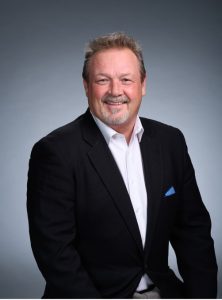 An Air Force vet, Horton joined EMS from Lockheed Martin and was the first director of sales and business development in the late 1990s. While at EMS, he oversaw antenna sales for LiveTV and Panasonic Avionics, including Panasonic’s $150M investment in the first-ever IFC broadband antenna for commercial aero use.
An Air Force vet, Horton joined EMS from Lockheed Martin and was the first director of sales and business development in the late 1990s. While at EMS, he oversaw antenna sales for LiveTV and Panasonic Avionics, including Panasonic’s $150M investment in the first-ever IFC broadband antenna for commercial aero use.
“There was such a passion at EMS when I joined. It was a very inspirational time in my career,” he recalls. “It gave me a real solid foundation in the satellite and connectivity space. I developed a deep and true respect for what engineering does,” he says.
What would Dr. Pippin think about how the satellite sector has evolved and grown over the decades since he passed?
Williams points out that when Pippin retired, the industry was solely focused on geosynchronous satellites. “None of the rise and fall of the first round of LEO satellites had happened, none of the current rise of LEO. He would be impressed with SpaceX’s Starlink constellation – the 300 satellites that have four phased arrays on them. On the other hand, you could also argue that it’s been 30 years, why aren’t we further along?”
Insatiable Quest for Bandwidth Remains
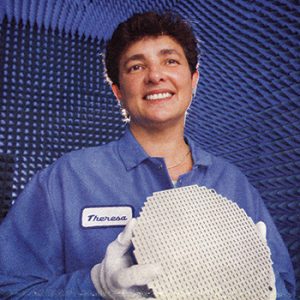 Brunasso agrees, adding, “Everyone is still trying to solve the same problem: bandwidth. We’re still trying to fix it because no matter how much bandwidth we get, it’s still not enough.”
Brunasso agrees, adding, “Everyone is still trying to solve the same problem: bandwidth. We’re still trying to fix it because no matter how much bandwidth we get, it’s still not enough.”
She believes Pippin would be surprised by how many people work in the satellite industry. “It’s pretty impressive. We recently celebrated the 50th year of the Apollo 11 lunar landing and now we’re getting back to the space station. I love that college students are now designing cubesats. It’s bringing more people into engineering,” Brunasso says.
Horton, pointing to the generations of engineers and satellite professionals Pippin touched, noted, “I don’t think he realized the influence he had on so many engineers and people that worked within the company and within the industry – of him planting the seed, ‘Is it possible?’”
 Hafner believes Pippin’s most long-lasting contribution was setting into motion “a principled approach to engineering” where engineers worked with industry to solve hard problems and not just focus on bottom line growth. The result: “EMS was a force to be reckoned with,” he says. “He’d be proud of that. I was proud to work there.”
Hafner believes Pippin’s most long-lasting contribution was setting into motion “a principled approach to engineering” where engineers worked with industry to solve hard problems and not just focus on bottom line growth. The result: “EMS was a force to be reckoned with,” he says. “He’d be proud of that. I was proud to work there.”
___________________
Anne Wainscott-Sargent, an Atlanta-based aerospace writer and marketing consultant, oversaw corporate PR for EMS Technologies for more than 11 years, from 1999 through 2010.
(This post was originally posted on the NXTCOMM blog on Monday, July 13, 2020.)





